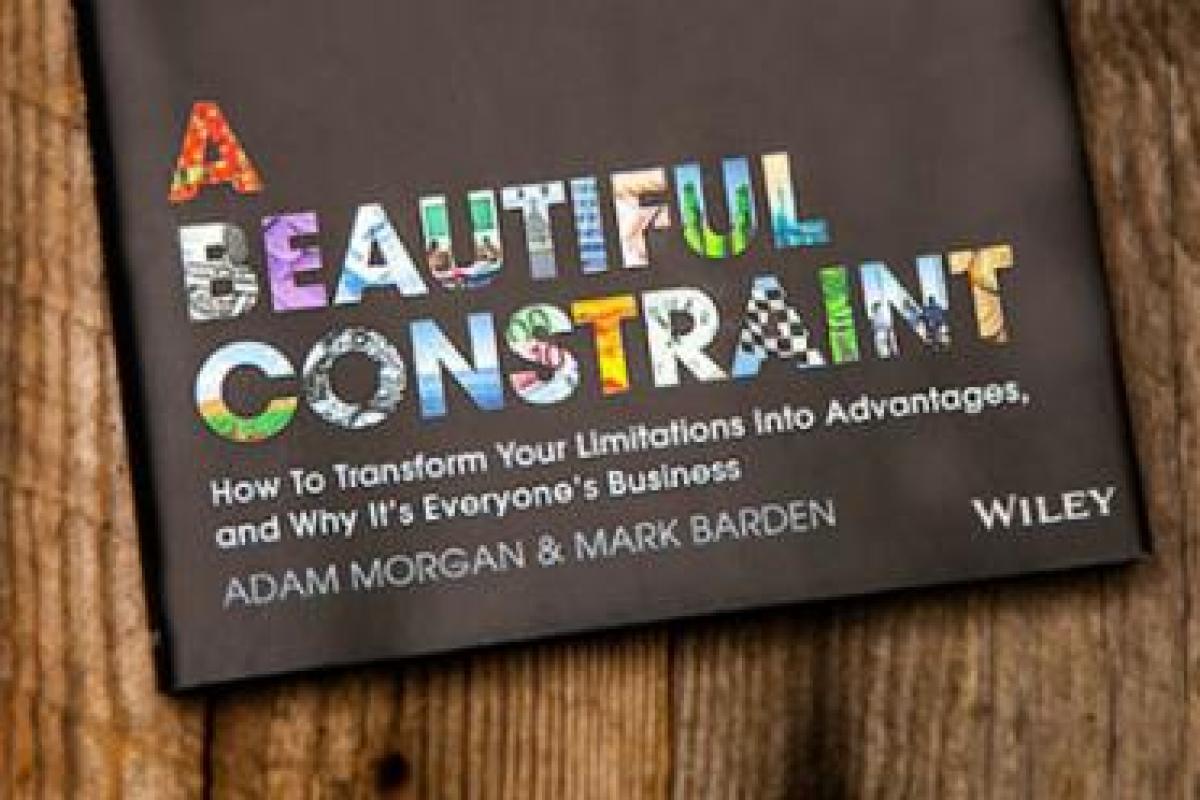Full disclosure: I have known Adam Morgan for many years and have worked with him and his team on projects both for clients and our own company. His hugely influential books (Eating the Big Fish and The Pirate Inside) and his compelling workshop facilitation offer an inspiring approach to brand storytelling, revealing the golden threads that link seemingly disconnected entrepreneurs, companies and sectors. So I was excited to dive into A Beautiful Constraint (co-written with Mark Barden) and I’m relieved to confirm that “beautiful” isn’t a misplaced adjective.
Drawing inspiration from the central theme of the book - constraints can be re-framed as new and better ways of achieving ambitious goals – I made notes during a long flight using the only material I had to hand, a small menu card, printed on one side. That way I would be limited to just the essential things you need to know. The authors are adept at capturing their wisdom in easily digestible, practical summaries (recognising that a major constraint these days is time, they promise that they can be read in precisely “21 minutes and 20 seconds”), so let me try to emulate them by giving you three big points.
- As the authors say when describing the origins of a unique spirit brand based on ingredients containing Rhubarb Tea and Sage: “each variant is not a flavour but a good story. People don’t tell each other about flavours, they tell each other stories”. Morgan and Barden are master storytellers.
- What makes their storytelling so powerful is the rich diversity of subjects and case studies. The authors draw on best practice from the usual suspects: Nike, Virgin, IKEA, Google. But what’s more impressive is the way they find unexpected connections between, for example, an NGO in Kenya helping rural chicken farmers by painting chicks blue to ward off birds of prey, eye hospitals in India that have applied efficiencies learned from McDonald’s and craft beer brand BrewDog’s audacious stunts (an ale laced with banned substances, anyone?) to challenge the mainstream brewers despite their total lack of marketing budget.
- This is storytelling with purpose. Morgan and Barden are generous in offering practical tools for weaning ourselves off what they call “path dependence”. They teach us how to ask “propelling questions”, they illustrate the power of replacing “we can’t because…” with “we can if…” (taking inspiration from the baker Warburton’s) and they give us a framework for creating abundance when all we can see is scarcity.
Just as I was set to apply these practical frameworks narrowly to the challenges of hitting our own business targets over the next quarter (and, believe me, we will), the authors moved up several gears in the last three chapters and came over all existential. We are at a unique moment in history, they argue. The relationship between abundance and scarcity is an infinity loop and (as per the subtitle of the book) transforming limitations into advantages is everyone’s business now - you know, the big stuff like collapsing crop yields, refugee crises, strained healthcare and drought. And at this point A Beautiful Constraint becomes more than “just” an excellent study of corporate inventiveness and turns into the authors’ most ambitious and profound work to date. By learning how to make constraints beautiful we can invent a better future and, as they conclude, “perhaps nudge the world toward a more constructive approach to its problems”. The world could do a lot worse than take advice from Morgan and Barden on how to do this.
Andy Bryant is Managing Director, Red Bee, and co-author of The TV Brand Builders: How to win audiences and influence viewers (Kogan Page)
